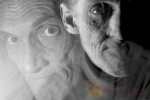Until we have the Full Wolf Moon, or the Full Snow Moon, on the 30th

Category: Photography
About Photography, broadly.
Photography, HUUH!!, What is it Good For?
Politics, Religion, Art, Photography, etc.
A discussion thread on the Flickr site, in a group established around a particular camera, includes several personal statements as well as some open explorations on that the member who posted it calls a photographic “Paradigm Shift”. In his last two paragraphs, working professional photographer, and Nikon reviewer, Gerard Prins, makes a couple of personal statements:
Purpose lies not in choosing Nikon over Canon (or v.v.), but it does in purposely & knowingly choosing…(my edit).. purposely breaking the rules and purposely pursuing a personal style or point of view.
Purpose combined with talent creates Art, and creating Art is reserved – thank heavens – to those who purposely dedicate their lives to doing so.Let’s all thank digital for largely eliminating the technical barriers that once separated amateur from pro, allowing amateurs to raise the bar a notch or two and forcing all of us to – once again – concentrate on what photography is all about: talent, beauty & art.
That’s a point of view, alright –one that’s echoed a Lot in so many places. The last segment of that last sentence is one that finally moved me to respond, though, as it seeks to assert “what photography is all about”.
That merely raises the question mark, in me, but it’s the question that I believe each of us answers in some way or other, unique to “who” each of us is, at any one point in time, and to what our personal vision inspires us to attempt or to stand for.
Like politics and religion, “What is photography about?”, is at Best, the question that we each can use to true ourselves up to a vision.. or at Worst it is the question that can be used to “justify” or argue (same difference) a point of view ( to be “right” about it, in a limiting way).
At it’s most neutral, and most profound, though, photography is about
1) whatever the person who practices it is about
2) whatever the viewer perceives it to be about
3) whatever any of us can invent it to be about from here forward.
4) ___________________________________________________
OK, so Try This On
Lighting 001: a “class”.
Some feedback I’m getting on a recent project has moved me to make one of the key results available to others, so that you can take your photography to a next level. Your price?: Whatever you put into the followup “assignment”. I’ll also ask only that, should you have feedback or meaningful results, I’d really like to hear about it, either in comments on this post, or via email or links to images you’ve made out of implementing this little Audio/Visual combo.
Part, the First:
Guided Imagery has become a powerful and effective tool in all sorts of endeavors where enhanced results are desired. Athletes and executives are using them to become more effective; in healthcare fields healing is given a boost. I began using the idea in teaching lighting, years ago. While I cannot measure the results, those who have taken advantage of the recording I’m posting here are saying that they are experiencing light in new ways and it’s showing up in their new images.
This application of guided imagery (also called guided meditation) is, maybe, a little different. Instead of imagining making the perfect golf stroke or creating fat round red blood cells, this will be a journey to the part of yourself that knows more about light and lighting than you may already consciously command. We are:
A) certainly seeing and manipulating light in our homes, and other places,
B) while sometimes thinking that we need to know dedicated photographic lighting techniques before we can begin to master light in our pictures.
My “come from”, in making this guided imagery, is that we access the intuitive and/or semi-conscious awareness we already have of light, and with the second of this pair of tools, have that awareness show up in our photos. Only with a conscious awareness of light.. really seeing it, if you will.. are we empowered to use the gear effectively. Formulae and “how to” videos are great tools, no question about that; this is an attempt to engage one’s imagination, and eyes (both inner and outer) before one’s technique. With awareness, practice, and good old fashioned paying attention, we will see lighting well using continuous lighting sources, yes, but also previsualize the lighting we want. That way, when using strobist-style lighting, we already have a clue where to start. Another benefit may be that you can begin to create lighting that isn’t naturally there without so much experimentation, first.
Here’s an audio file of the Guided Imagery
Part Too:
Here’s the Assignment (learned, originally, from a pivotal photography teacher for me, Sean Kernan)
Make photographs, where light is the subject of the photograph.
Shoot at least a card full of pictures in a session, so that you are not giving yourself time to overthink it. Avoid previsualizing ideas, or judging the opportunities as they come to you while you’re out shooting with the assignment in mind. Find and react to light, and take its picture. One of the first thoughts that come to the minds of many is “isn’t Any photograph about light?”. Well, technically, maybe 98% (excluding x-rays, sonograms, etc) are about light, yeah. In this case, however, let your inner papparazzi treat light, itself, as the Star, instead of as Best Supporting Role.





